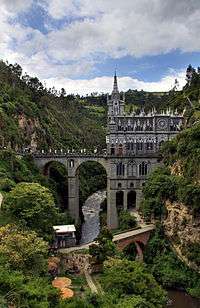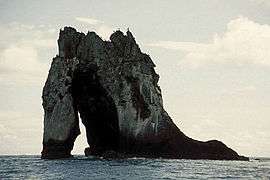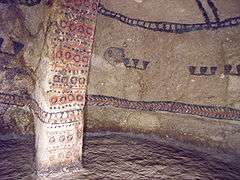Tourism in Colombia
Tourism in Colombia is an important sector in the country's economy. Colombia has major attractions as a tourist destination, such as Cartagena and its historic surroundings, which are on the UNESCO World Heritage List; the insular department of San Andrés, Providencia y Santa Catalina; and Santa Marta and the surrounding area. The coffee region is also a very popular destination, especially the city of Armenia and its surroundings. Fairly recently, Bogotá, the nation's capital, has become Colombia's major tourist destination because of its improved museums and entertainment facilities and its major urban renovations, including the rehabilitation of public areas, the development of parks, and the creation of an extensive network of cycling routes. With its very rich and varied geography, which includes the Amazon and Andean regions, the llanos, the Caribbean and Pacific coasts, and the deserts of La Guajira, and its unique biodiversity, Colombia also has major potential for ecotourism.[1]
History
In the early to mid-1980s, international tourism arrivals in Colombia reached nearly 1.4 million per year. Although they decreased by more than half thereafter, they have recovered at rates of more than 10 percent annually since 2002, reaching 1.9 million visitors in 2006. Tourism usually has been considered a low-growth service industry in Colombia because of internal violence, but in 2006 the country earned US$2 billion from international tourism. Tourists visiting Colombia from abroad came mainly from the United States (24.5 percent), followed by Venezuela (13.4 percent), Ecuador (9.1 percent), Spain (6.4 percent), and Mexico (4.9 percent). Approximately 90 percent of foreign tourists arrive by air, 10 percent by land transportation, and a tiny share by sea.[1]
The recovery of tourism has been helped by the Democratic Security and Defense Policy of Álvaro Uribe Vélez (president, 2002–6, 2006–10) and the so-called tourist caravans (caravanas turísticas), in which military forces provide reinforced protection on previously scheduled days to roads reaching major holiday attractions. The Democratic Security Policy, as it is known, is aimed at reestablishing control over all of the nation's territory, fighting illegal drugs and organized crime, and strengthening the justice system. The government also has been working toward generating a significant recovery in international tourism through Proexport Colombia, the public export-promotion agency.[1] The Ministry of Commerce, Industry and Tourism is the Colombian ministry in charge of tourism affairs.
Popular times to visit Colombia include the most famous festivals such as the Cali's Fair, the Barranquilla's Carnival, the Bogota Summer Festival, the Ibero-American Theater Festival and the Flower Festival is when the most foreign tourists go to Colombia. Many people visit Colombia during Christmas time and the celebrations surrounding the Independence of Colombia. The Ministry of Tourism considers high seasons the Holy Week, summer (June, July, August, September) and Christmas season. During the holy week many travel to the Caribbean Region of Colombia or visit popular landmarks like Las Lajas Cathedral, Salt Cathedral of Zipaquirá, the towns of Santa Cruz de Mompox, Guamal or Popayán where Roman Catholic traditions and rituals are performed, among others.[2][3]
The great variety in geography, flora and fauna across Colombia has also resulted in the development of an ecotourist industry, concentrated in the country's national parks. Popular ecotourist destinations include: along the Caribbean coast, the Tayrona National Natural Park in the Sierra Nevada de Santa Marta mountain range and Cabo de la Vela on the tip of the Guajira Peninsula; the Nevado del Ruiz volcano, the Cocora valley and the Tatacoa Desert in the central Andean region, the Farallones de Cali National Natural Park, in the departament of Valle del Cauca; Amacayacu National Park in the Amazon River basin; and the Pacific islands of Malpelo and Gorgona, there other unique landscapes like the river of the seven colors in Meta. Colombia is home to seven UNESCO World Heritage Sites.
Arrivals by country
Most visitors arriving to Colombia on short term basis in 2015 were from the following countries of nationality:[4]
| Rank | Country | Number |
|---|---|---|
| 1 | 428,927 | |
| 2 | 344,543 | |
| 3 | 149,593 | |
| 4 | 144,618 | |
| 5 | 136,917 | |
| 6 | 132,514 | |
| 7 | 123,621 | |
| 8 | 109,994 | |
| 9 | 100,087 | |
| 10 | 66,580 |
Ecotourism
Colombian Coffee-Growers Axis
The Colombian coffee-growers axis (Spanish: eje cafetero) is a part the Colombian Paisa region famous for the growing and production of most Colombian coffee, renowned as some of the best coffee in the world. The axis is composed of three departments: Caldas, Quindío and Risaralda. These departments are among the smallest departments in Colombia with a total combined area of 13873 km² (5356 mi²), this amounts to roughly 1.2% of the Colombian territory. The combined population is 2,291,195 (2007 census)

Colombia has coastline, mountainous areas, and tropical jungle. There are volcanoes and waterfalls.
- Amacayacu National Park
- Cabo de la Vela
- Cocora valley
- Los Nevados
- Doña Juana-Cascabel Volcanic Complex
- Gorgona and Malpelo islands
- Los Katíos National Park
- Munchique National Park
- Serranía de la Macarena
- Sierra Nevada de Santa Marta National Park
- PANACA Park
- Tayrona Park (Santa Marta)
- Tatacoa Desert
- Chicamocha Canyon National Park
- El Mariposario enthomologic display specialized in Lepidoptera
- Peñas Blancas rock climbing site.
- La Mojarra Rock Climbing Site
Safety
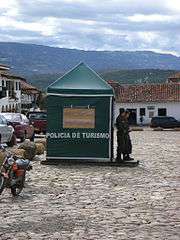
For many years serious internal armed conflict deterred tourists from visiting Colombia, with official travel advisories warning against travel to the country. However, in recent years numbers have risen sharply, thanks to improvements in security resulting from former President Álvaro Uribe's "democratic security" strategy, which has included significant increases in military strength and police presence throughout the country and pushed rebel groups further away from the major cities, highways and tourist sites likely to attract international visitors. Foreign tourist visits were predicted to have risen from 0.5 million in 2003 to 1.3 million in 2007,[5] while Lonely Planet picked Colombia as one of their top ten world destinations for 2006.[6]
In 2010, tourism in Colombia increased 11% according to UNWTO Tourism Highlights for that year.[7]
In 2011 Colombia received 3 million foreign visitors, according to official statistics.[8]
Transportation
Colombia has a network of national highways maintained by the Instituto Nacional de Vías or INVIAS (National Institute of Roadways) government agency under the Ministry of Transport. The Pan-American Highway travels through Colombia, connecting the country with Venezuela to the east and Ecuador to the south.
Four railways operate in Colombia: Fenoco, Cerrejón, Occidente, and Paz del Río.

Transportation in Colombia is regulated within the functions of the Ministry of Transport and entities such as the National Roads Institute (INVÍAS) responsible for the Highways in Colombia (13 000 km), the Aerocivil, responsible for civil aviation and airports,[9] DG Maritime (DIMAR),[10] among others and under the supervision of the Superintendency of Ports and Transport.[11] There will be 2.279 kilometers (1,416 miles) of divided expressways in Colombia by 2014.[12]
Airports
The Colombian airport system, has about 1,101 airports and airfields between public and private, of which 13 of them are international airports. The main air terminal in the country, is the El Dorado International Airport of Bogotá, with about 20 million passengers per year, making it one of the most dynamic airports in Latin America. It is currently undergoing expansion and modernization to adapt to new requirements demand. The country is about to have a new international aerodrome in the coming years, the International Airport Café, Aerocafé, located in the town of Palestina, Caldas, which serve the city of Manizales capital of that department. It is also expected that the Antonio Nariño Airport of the Pasto and the El Caraño Airport of Quibdó in Chocó become international aerodrome.[13]
Urban transport

Urban transport systems are developed in Bogotá and Medellín. Traffic congestion in Bogotá has greatly exacerbated by the lack of rail transport. However, this problem has been alleviated somewhat by the development of the TransMilenio bus rapid and restriction of vehicles through a ban on all day, the rotation of passenger cars based on the number of plates called Pico y Placa (Peak and Plate). Bogotá system consists of bus and minibus services run by both private and public sector. Since 1995 Medellín had a street railway known as the 'Metro de Medellín', which connects to most of the area Medellín Metropolitan. A high cable car system, Metrocable, was added in 2004 to link some of the poorest neighborhoods of Medellín mountain with the Metro of Medellín. In late 2011 a system of articulated buses, called Metroplus began operating in Medellín as well. A system called bus rapid transit Transmetro, similar to the TransMilenio in Bogotá, Barranquilla began operating in late 2007. Other cities have also been constructed systems of mass transportation. In Pereira was opened in 2006 Megabús. In Bucaramanga in 2009 opened its doors in the mass transit system called Metrolinea. Currently, the city of Cartagena is being built a transport system called massive Transcaribe. In other highly developed cities such as Cali constructed a system of articulated buses that changed the face of the city, in 2013 came into operation a system of high modern cable car.
Port system
The Colombian port system, privatized in the 1990s, consists of approximately 122 facilities. There Societies Regional Port of Buenaventura (main seaport of Colombia), Barranquilla, Tumaco, Cartagena and Santa Marta. There are 9 other port companies to public service, 7 private port companies, 44 piers and 10 piers approved for small boats, among other minor.[14]
Weather
The climate is tropical along coast and eastern plains; cold in the highlands; periodic droughts. Colombia is an equatorial country, so there are no seasons in the usual sense of the word; temperatures do not vary much throughout the year. What Colombians normally refer to as the winter is the rainy season. The average temperature is about 30 °C (80 °F).
Music genres
Colombia is known as "the land of a thousand rhythms". Colombia has more than 1,025 folk rhythms.
Some of the main genres are the following:
- Chandé (from Colombian Atlantic Coast). It is a cheerful and partying rhythm that is part of the coastal idiosyncrasies and carnivals. It comes from the fusion of indigenous rhythms with African black music
- Alabaos (Funeral dirge in dialogue, Afro-Colombian culture)
- Bambuco (from Colombian Andean region, European rithm)
- Bullerengue (from Caribbean Region, Afro-Colombian music)
- Bunde chocoano (from Chocó Region, Afro-Colombians learned from the Native Americans when as black slaves during colonial escaped and took refuge in remote areas and were received with hospitality by Native Americans of the Pacific coast)
- Bunde tolimense (Euro-Colombian music)
- Cumbia (most representative from the Atlantic Coast, indigenous and African rhythm, of great expressive richness, it has variations by region)
- Currulao (from Pacific Region, Afro-Colombian culture)
- Danza Colombia (from Colombian Andes, from European origin with Indigenous elements)
- Guabina (from Andes Region, Indigenous rithm)
- Joropo (from Los Llanos Venezuelan-Colombian Region, its lyrics are messages that express the values of the llaneran people, European origin music genre)
- Mapalé (from Atlantic coast, Afro-Colombian rithm)
- Merecumbé (mix between Colombian merengue and cumbia of Atlantic coast, created by Pacho Galán in 1950´s)
- Colombian Pasillo (European origin)
- Porro
- Sanjuanero (bambuco and joropo fussion)
- Champeta (The classical conception of champetuísmo has four important aspects: musical expression, its distinctive jargon, the "picós" and perreos -fiestas and verbenas-. Some give the same importance to other aspects, such as dancing, political activism, designing clothing, audiovisual aspect of its videos, and other cultural elements, of Afro-Colombian music)
- Torbellino (representative songs of the departments of Boyacá, Cundinamarca and Santander, It tune of religious and family fiestas)
- Vallenato (from Atlantic Coast Region, it is important to the narrative nature of love's stories or descriptions of people, it was declared Intangible Cultural Heritage of the Nation).
Other urban music have such as salsa, pop, rock, between others.
Gallery
References
- 1 2 3 Roberto Steiner and Hernán Vallejo. "Tourism". In Colombia: A Country Study (Rex A. Hudson, ed.). Library of Congress Federal Research Division (2010).
 This article incorporates text from this source, which is in the public domain.
This article incorporates text from this source, which is in the public domain. - ↑ "gosouthamerica.com Holy week in Colombia and Venezuela". Gosouthamerica.about.com. 18 August 2011. Retrieved 18 October 2011.
- ↑ "Holy week in Colombia". Colombia.com. Retrieved 18 October 2011.
- ↑ Informes de turismo
- ↑ Marián Hens (7 December 2007). "BBC News, A new hot-spot for the tourism industry". BBC News. Retrieved 16 May 2010.
- ↑ "Hot Destination: Colombia". Christian Science Monitor. 9 May 2006.
- ↑ UNWTO Tourism Highlights 2010 Edition. World Tourism Organization (UNWTO)
- ↑ Juan Uribe and Astrid López (29 February 2012). "Portafolio, En el 2011 llegaron a Colombia 3 millones de extranjeros" (in Spanish). Portafolio.
- ↑ "Aeronáutica Civil de Colombia – Objetivos Institucionales". Portal.aerocivil.gov.co. Retrieved 2013-03-11.
- ↑ "Portal Marítimo Colombiano". Dimar. Retrieved 2013-03-11.
- ↑ "Superintendencia De Puertos Y Transporte". Supertransporte.gov.co. Retrieved 2013-03-11.
- ↑ García, Alfredo (18 November 2011). "El Gobierno invertirá en la construcción de más dobles calzadas" (in Spanish). El Pais.
- ↑ "República de Colombia Libertad y Orden". Aerocivil.gov.co. 2011-05-16. Retrieved 2013-06-15.
- ↑
See also
External links
-
 Colombia travel guide from Wikivoyage
Colombia travel guide from Wikivoyage - Colombia Travel Blog Repository

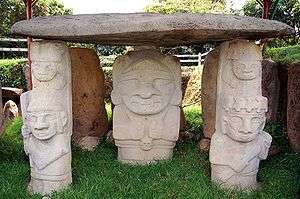
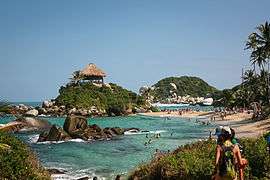
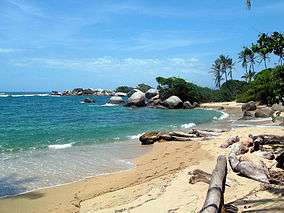
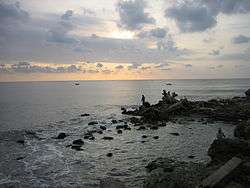
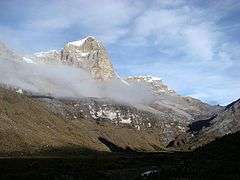
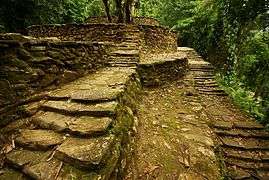
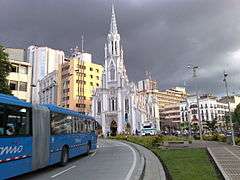

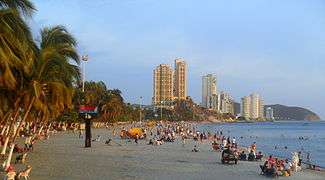

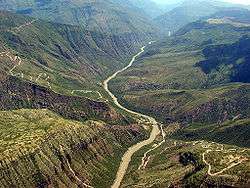
.jpg)
